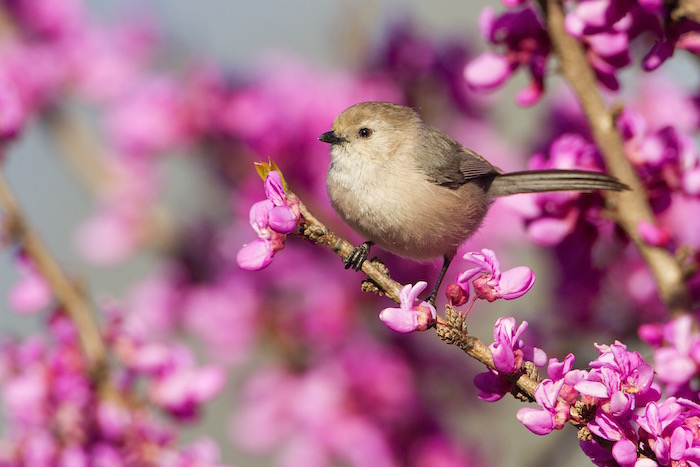
In the list of things cute, bushtits belong right up there with babies and buttons. They’re tiny and fluffy, sociable, soft-voiced, and soft-toned. They’re the downy little twittering things, the size of a mouse, the weight of a hummingbird, and the color of a country road. They fly severally from one tree to another—three of them together, then four more, oh, ten of them, and another seven, and sometimes on up to several dozen. They gently tweet among themselves—“I’m here,” “I’m here,” “I’m right here with you”—keeping loosely together as they scour leaves and twigs from every angle to find their miniscule insect meals.
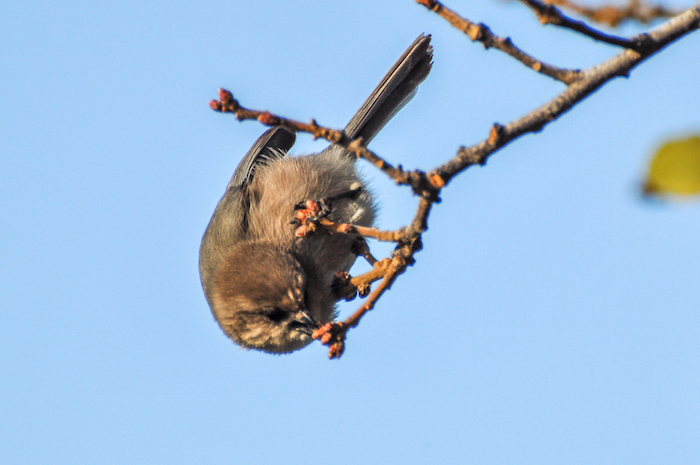
Up close, their gray-brown feathers seem softer than an Easter chick’s. The males look gentle, doe-eyed. The females sport a modest adornment. Their eyes are amber.
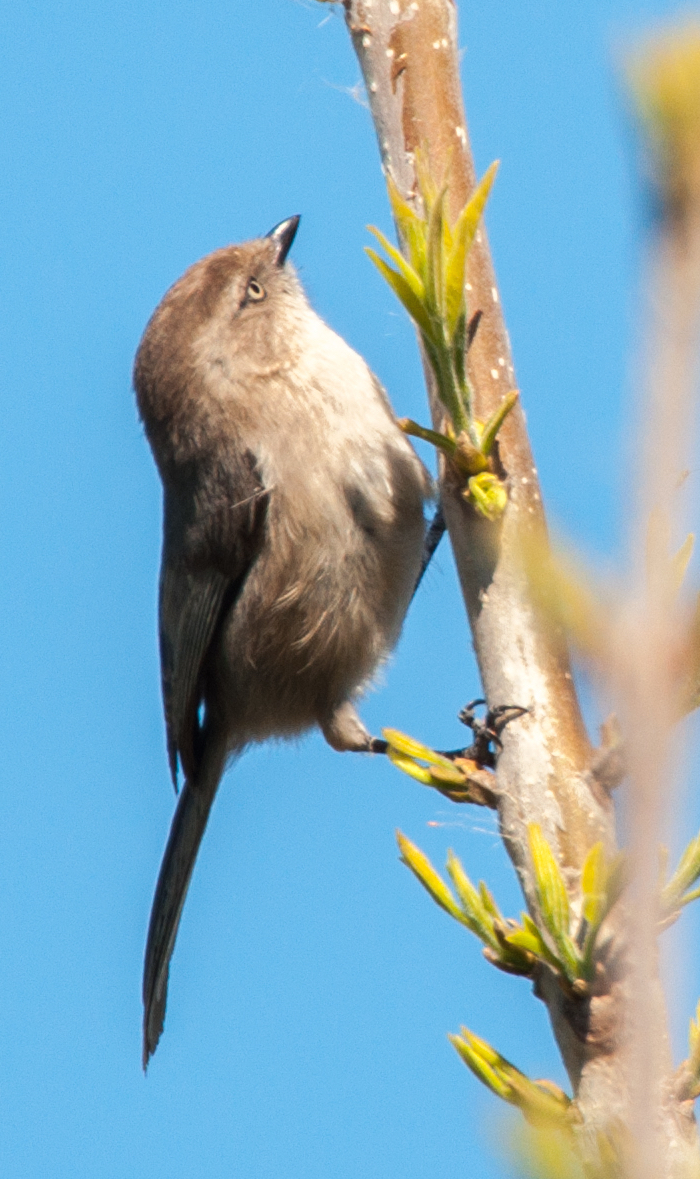
But the great extravagance in the bushtit world is their nest. Both parents and sometimes additional helpers, too, work for up to a month to weave their hanging crèche. It might be in weeds just off the ground, or it might be a hundred feet up in a tree. It is often at a handy viewing level. Imagine a hanging tube sock, a foot long, woven of soft plant fibers meshed with strong spider webs. In that mossy pouch the young will hatch and grow. The upper part of the sock, stitched closed against its supporting leaves and branchlets, holds a single half-inch peep-hole, the nest’s only doorway.
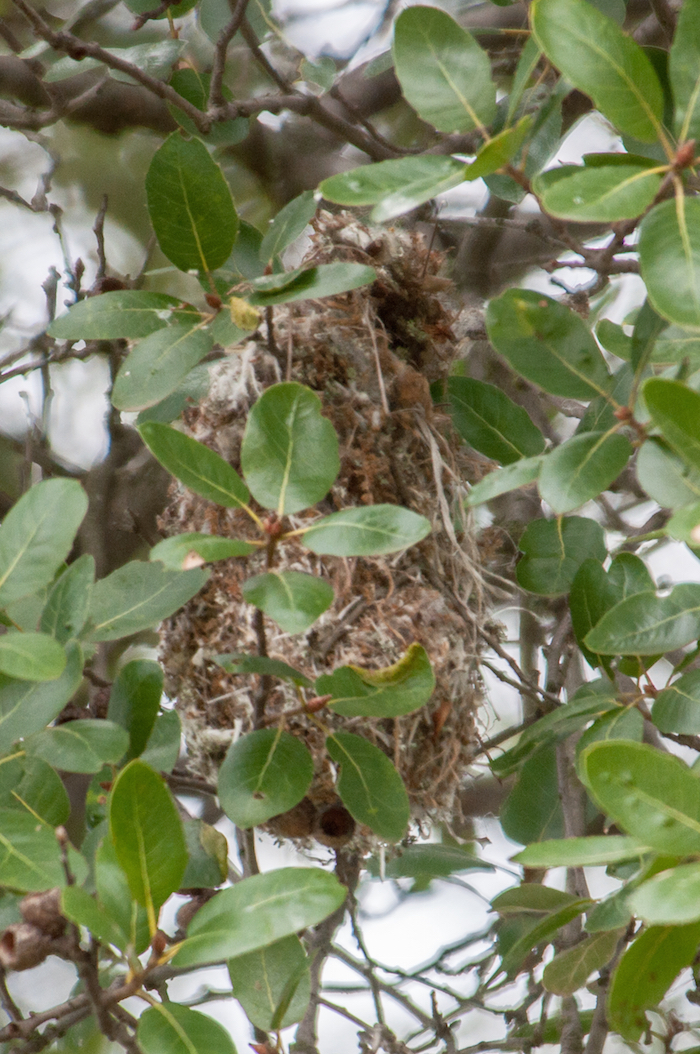
The extensive work required for their elaborate homes seems to structure much of bushtit life, but they face the challenge with a pragmatism that would make a yankee proud. First, they do not migrate. Staying put allows them to start building their homes early, as early as mid-winter, when mild spells begin to break winter’s chill. Second, mated pairs stay together for several years, a level of commitment normally seen only in large birds like swans and eagles. Their mating fidelity spares bushtits from hitting the dating scene every year, and leaves more time and energy for nesting. Third, once they build a nest, a pair will usually reuse it for a second clutch of eggs. Building a new architectural masterpiece would take time and energy away from that second batch of young.
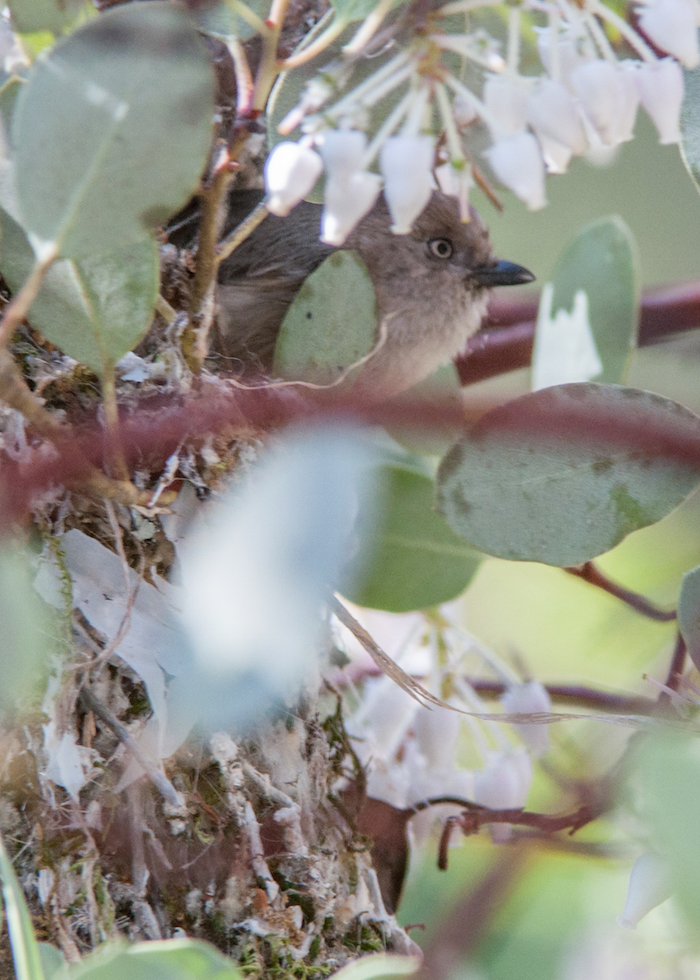
Fourth—ah, being tiny does not make life less complicated. Bushtits live in flocks of about 10-40 birds. They travel together when foraging, they huddle together when it is cold; they sometimes intersect with other flocks, but then reform their own. And in nesting season, when there are unmated birds or when flock-mates lose a nest, they often undertake what is called plural cooperative breeding.
Adults without their own nest will often help their flock-mates at all stages of nesting—construction, incubating, feeding young, and shepherding fledglings. Up to six adults may help at some nests, all sharing in the warmth of the home. Helpers often continue to feed fledglings while the breeding pair starts a second clutch. Sometimes two or more females will lay their eggs in the cooperative nest. The DNA studies to determine paternity in shared nests have not been done.
Close views are often possible with little birds. When my daughter was a child a flock approached us in the back yard, twittering through twigs just a yard away with their peeping and soft feathers. We watched, and she scrunched her nose over a smile as if in recognition that Oh, there’s beauty in the world. It’s a view I’d wish for every child, and every parent, too.
